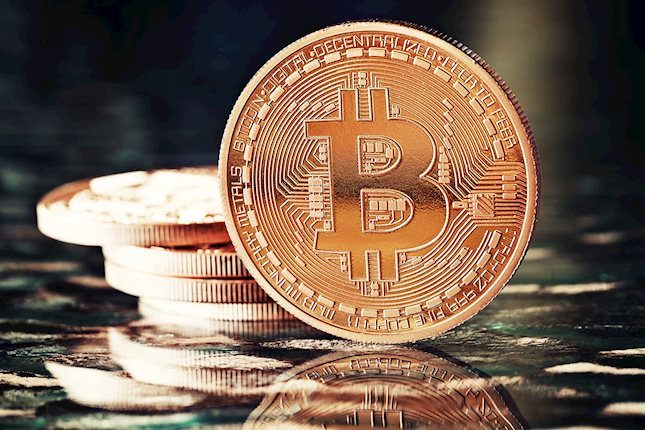- The US Dollar trades in the red after very mixed ISM data.
- Markets are in the green with Europe up near 1% and US equities trying to follow.
- The US Dollar Index trades in the mid-104.00 region, though retreats to 104.00 after ISM print.
The US Dollar (USD) trades on the backfoot this Monday with the numbers from the Institute for Supply Management (ISM) as biggest driver for the Greenback weakness. The moves comes after the different data points reveal that there is easing at hand. The job component even fell further into contraction and might be a sign on the horizon that this week's US Jobs Report and its Nonfarm Payroll component might get ugly.
With all data points for this Monday out of the way, traders will start preparing for Tuesday. The Factory Orders and the US JOLTS Job Openings report will confirm wether the that the US jobs market is no longer as tight as traders thought. It becomes clear from already this Monday that this will be a pivotal week for the US Dollar Index (DXY).
Daily digest market movers: ISM split, which is bad news
- Monday’s US calendar kicked off with the release of the final S&P Global Manufacturing PMI for May The final reading came in at 51.3, stronger than the 50.9 number.
- At 14:00 GMT, the Institute for Supply Management released its recent findings from its monthly survey for May:
- The headline Manufacturing PMI index contraacted further from 49.2 to 48.7.
- The Employment Index jumped from 48.6 in April to 51.1 in May.
- The New Orders index fell further into contraction from 49.1 to 45.4.
- The Prices Paid index fell as well, from 60.9 to 57.
- Construction Spending is expected to rise 0.2% in April, swinging from a 0.2% contraction in March.
- Equities are in the green across Europe, while US equities are having some difficulties with the Dow Jones signalling technical issues.
- According to the CME Fedwatch Tool, Fed Fund futures pricing data suggests a 46.1% chance for keeping rates unchanged in September, against a 47.2% chance for a 25 basis points (bps) rate cut and a 6.7% chance for an even 50 bps rate cut. An interest rate hike is no longer considered an option.
- The benchmark 10-year US Treasury Note trades around 4.41%, and heads to the lower end of its monthly range between 4.34% and 4.61%.
US Dollar Index Technical Analysis: End of consolidation this week
The US Dollar Index (DXY) is hanging a bit in no man's land this Monday after its negative performance last week. When looking at a weekly chart, the DXY is clearly in consolidation, posting with lower highs and higher lows as sellers and buyers are being pushed towards each other. In this context, normally a breakout is then set to take place, something that could happen this week taking into account the very busy economic calendar ahead.
On the upside, the DXY index reclaimed the key 105.00 round level, which broadly aligns with the 55-day Simple Moving Average (SMA). It will be important to see if these levels hold support should the US data weaken. Once that is proven, look for 105.52 and 105.88.
On the downside, the 200-day SMA at 104.44 and the 100-day SMA around 104.42 are the last line of defence. Once that level snaps, an air pocket is placed between 104.30 and 103.00. Should the US Dollar decline persist, the low of March at 102.35 and the low from December at 100.62 are levels to consider.
Central banks FAQs
Central Banks have a key mandate which is making sure that there is price stability in a country or region. Economies are constantly facing inflation or deflation when prices for certain goods and services are fluctuating. Constant rising prices for the same goods means inflation, constant lowered prices for the same goods means deflation. It is the task of the central bank to keep the demand in line by tweaking its policy rate. For the biggest central banks like the US Federal Reserve (Fed), the European Central Bank (ECB) or the Bank of England (BoE), the mandate is to keep inflation close to 2%.
A central bank has one important tool at its disposal to get inflation higher or lower, and that is by tweaking its benchmark policy rate, commonly known as interest rate. On pre-communicated moments, the central bank will issue a statement with its policy rate and provide additional reasoning on why it is either remaining or changing (cutting or hiking) it. Local banks will adjust their savings and lending rates accordingly, which in turn will make it either harder or easier for people to earn on their savings or for companies to take out loans and make investments in their businesses. When the central bank hikes interest rates substantially, this is called monetary tightening. When it is cutting its benchmark rate, it is called monetary easing.
A central bank is often politically independent. Members of the central bank policy board are passing through a series of panels and hearings before being appointed to a policy board seat. Each member in that board often has a certain conviction on how the central bank should control inflation and the subsequent monetary policy. Members that want a very loose monetary policy, with low rates and cheap lending, to boost the economy substantially while being content to see inflation slightly above 2%, are called ‘doves’. Members that rather want to see higher rates to reward savings and want to keep a lit on inflation at all time are called ‘hawks’ and will not rest until inflation is at or just below 2%.
Normally, there is a chairman or president who leads each meeting, needs to create a consensus between the hawks or doves and has his or her final say when it would come down to a vote split to avoid a 50-50 tie on whether the current policy should be adjusted. The chairman will deliver speeches which often can be followed live, where the current monetary stance and outlook is being communicated. A central bank will try to push forward its monetary policy without triggering violent swings in rates, equities, or its currency. All members of the central bank will channel their stance toward the markets in advance of a policy meeting event. A few days before a policy meeting takes place until the new policy has been communicated, members are forbidden to talk publicly. This is called the blackout period.
Information on these pages contains forward-looking statements that involve risks and uncertainties. Markets and instruments profiled on this page are for informational purposes only and should not in any way come across as a recommendation to buy or sell in these assets. You should do your own thorough research before making any investment decisions. FXStreet does not in any way guarantee that this information is free from mistakes, errors, or material misstatements. It also does not guarantee that this information is of a timely nature. Investing in Open Markets involves a great deal of risk, including the loss of all or a portion of your investment, as well as emotional distress. All risks, losses and costs associated with investing, including total loss of principal, are your responsibility. The views and opinions expressed in this article are those of the authors and do not necessarily reflect the official policy or position of FXStreet nor its advertisers. The author will not be held responsible for information that is found at the end of links posted on this page.
If not otherwise explicitly mentioned in the body of the article, at the time of writing, the author has no position in any stock mentioned in this article and no business relationship with any company mentioned. The author has not received compensation for writing this article, other than from FXStreet.
FXStreet and the author do not provide personalized recommendations. The author makes no representations as to the accuracy, completeness, or suitability of this information. FXStreet and the author will not be liable for any errors, omissions or any losses, injuries or damages arising from this information and its display or use. Errors and omissions excepted.
The author and FXStreet are not registered investment advisors and nothing in this article is intended to be investment advice.
Recommended content
Editors’ Picks

EUR/USD tumbles to 2024 lows near 1.0460
The US Dollar gathers extra pace and weigh on the risk complex, sending EUR/USD to new YTD lows near the 1.0460 region as the NA draws to a close on Thursday.

GBP/USD dips to multi-month lows around 1.2570
Further losses now motivate GBP/USD to revisit the vicinty of the 1.2570 zone for the first time since early May, always on the back of the strong move higher in the Greenback.

Gold faces extra upside near term
Gold extends its bullish momentum further above $2,660 on Thursday. XAU/USD rises for the fourth straight day, sponsored by geopolitical risks stemming from the worsening Russia-Ukraine war. Markets await comments from Fed policymakers.

BTC hits an all-time high above $97,850, inches away from the $100K mark
Bitcoin hit a new all-time high of $97,852 on Thursday, and the technical outlook suggests a possible continuation of the rally to $100,000. BTC futures have surged past the $100,000 price mark on Deribit, and Lookonchain data shows whales are accumulating.

A new horizon: The economic outlook in a new leadership and policy era
The economic aftershocks of the COVID pandemic, which have dominated the economic landscape over the past few years, are steadily dissipating. These pandemic-induced economic effects are set to be largely supplanted by economic policy changes that are on the horizon in the United States.

Best Forex Brokers with Low Spreads
VERIFIED Low spreads are crucial for reducing trading costs. Explore top Forex brokers offering competitive spreads and high leverage. Compare options for EUR/USD, GBP/USD, USD/JPY, and Gold.